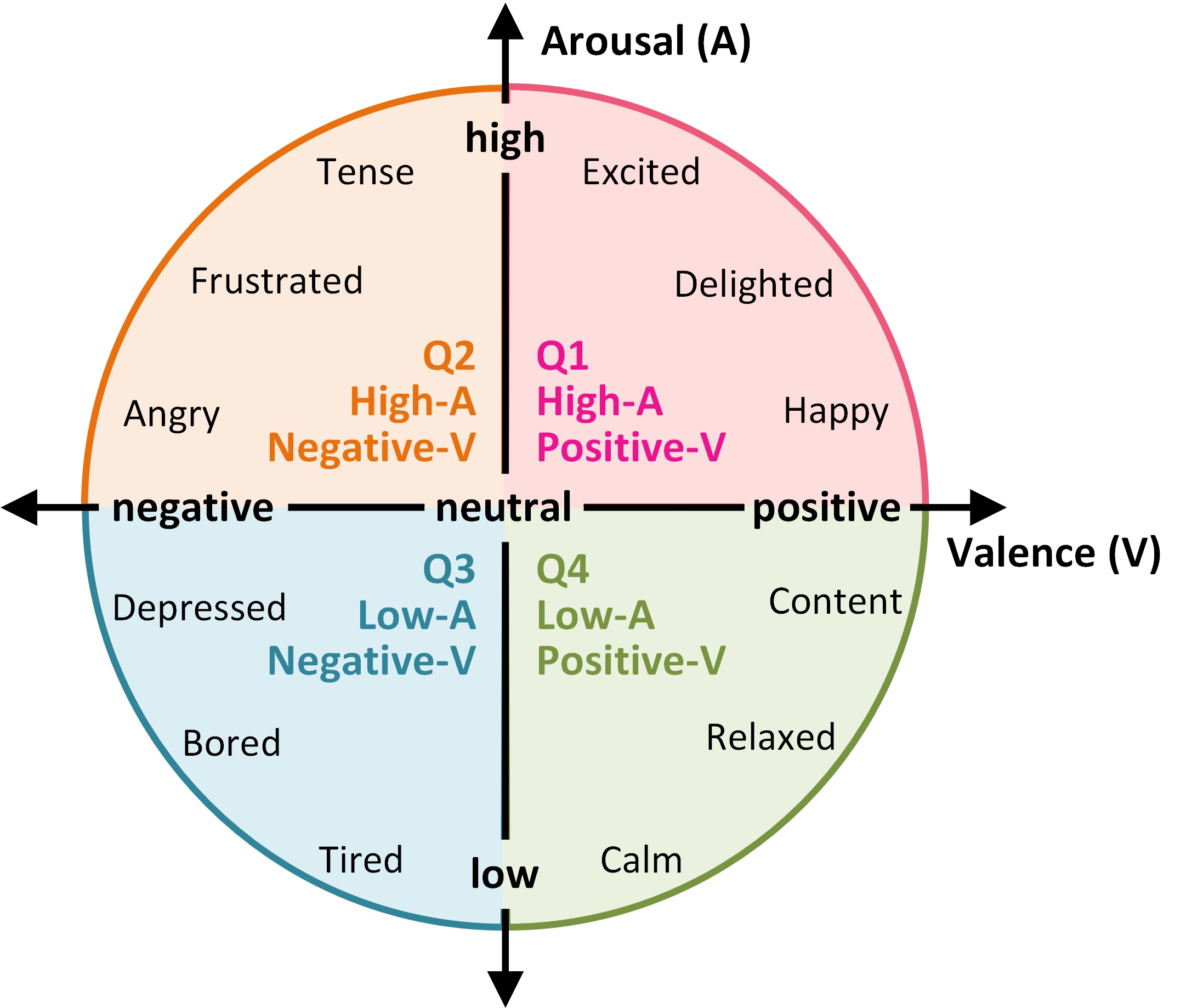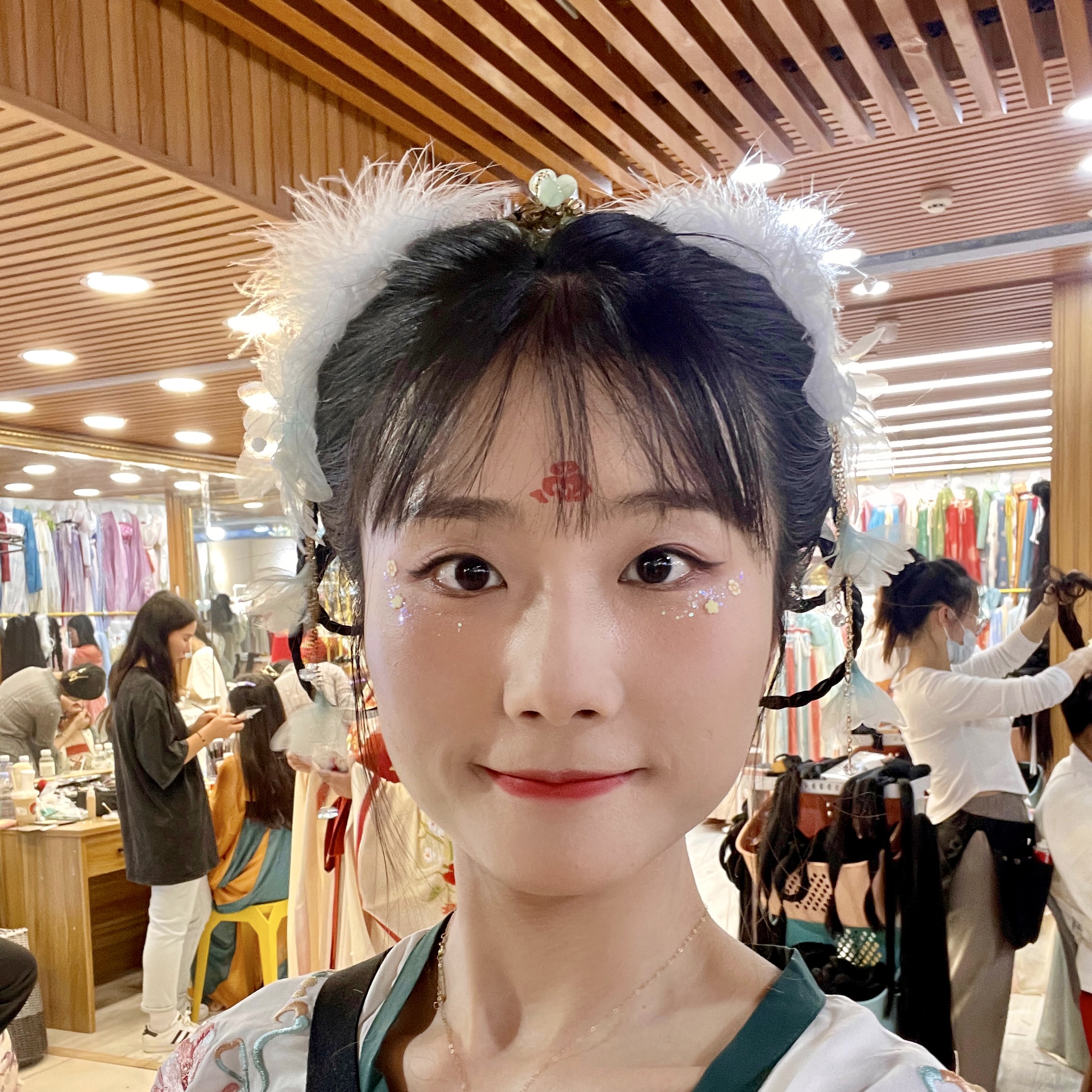MusER: Musical Element-Based Regularization for Generating Symbolic Music with Emotion
The two-dimensional arousal-valence (A-V) emotion model is widely adopted in the literature, as shown below. Within this model, the two dimensions, namely arousal and valence, respectively indicate the level of autonomic activation and pleasantness. These two dimensions divide the A-V model into four quadrants, each corresponding to a specific class of emotions. We employ the four quadrants (4Q) as the emotion labels for generating emotional music.

Generating music with different emotions (4Q)
- Q1
| Example 1 | Example 2 | Example 3 |
|
|
|
|
- Q2
| Example 1 | Example 2 | Example 3 |
|
|
|
|
- Q3
| Example 1 | Example 2 | Example 3 |
|
|
|
|
- Q4
| Example 1 | Example 2 | Example 3 |
|
|
|
|
Musical element transfer
- Case 1: Transfer velocity in Q1 to music in Q4 (Q4+Q1 v)
| Example 1 | |||
|
Q4 original:
|
|
Q4+Q1 v:
|
|
| Example 2 | |||
| Q4 original: |
|
Q4+Q1 v:
|
|
| Example 3 | |||
|
Q4 original:
|
|
Q4+Q1 v:
|
|
- Case 2: Transfer pitch, duration, and velocity in Q1 to music in Q3 (Q3+Q1 pdv)
| Example 1 | |||
|
Q3 original:
|
|
Q3+Q1 pdv:
|
|
| Example 2 | |||
| Q3 original: |
|
Q3+Q1 pdv:
|
|
| Example 3 | |||
|
Q3 original:
|
|
Q3+Q1 pdv:
|
|
- Case 3: Transfer tempo in Q1 to music in Q4 (Q4+Q1 t)
| Example 1 | |||
|
Q4 original:
|
|
Q4+Q1 t:
|
|
| Example 2 | |||
| Q4 original: |
|
Q4+Q1 t:
|
|
| Example 3 | |||
|
Q4 original:
|
|
Q4+Q1 t:
|
|
- Case 4: Transfer pitch in Q1 to music in Q3 (Q3+Q1 p)
| Example 1 | |||
|
Q3 original:
|
|
Q3+Q1 p:
|
|
| Example 2 | |||
| Q3 original: |
|
Q3+Q1 p:
|
|
| Example 3 | |||
|
Q3 original:
|
|
Q3+Q1 p:
|
|
- Case 5: Transfer duration in Q2 to music in Q3 (Q3+Q2 d)
| Example 1 | |||
|
Q3 original:
|
|
Q3+Q2 d:
|
|
| Example 2 | |||
| Q3 original: |
|
Q3+Q2 d:
|
|
| Example 3 | |||
|
Q3 original:
|
|
Q3+Q2 d:
|
|
- Case 6: Transfer chord in Q2 to music in Q4 (Q4+Q2 c)
| Example 1 | |||
|
Q4 original:
|
|
Q4+Q2 c:
|
|
| Example 2 | |||
| Q4 original: |
|
Q4+Q2 c:
|
|
| Example 3 | |||
|
Q4 original:
|
|
Q4+Q2 c:
|
|
